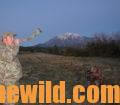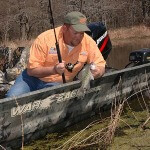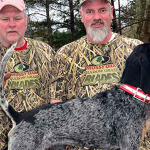Editor’s Note: Al Morris of Springville, Utah, has hunted elk for three decades and has guided for elk for two decades in Utah, New Mexico, Colorado, Wyoming, Idaho, Montana and Arizona. Morris has won the World Elk Calling Championship and the Best of the West Elk-Calling Contest, the Utah State Bugling Championship and the World Coyote Calling Championship.
Many hunters can’t afford to buy outfitting elk hunts, because they can cost from $3,000 to as much as $20,000 each. The average hunter has to do his homework to find a place to take an elk. If a hunter wants to go elk hunting, he needs to first learn where the biggest herds of elk can be found in the states he’s considering hunting.
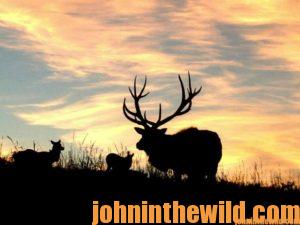
Call the Division of Wildlife in the state you want to hunt to learn where the most elk live in that state. If you decide to hunt where there are numbers of elk, realize that plenty of other people will be hunting there, too. Decide then whether you’ll hunt from your vehicle and spot or stalk hunt, or if you’ll pack-in and hike to the places where you want to hunt.
Next, talk to the land manager – either the USDA Forest Service office or the Bureau of Land Management in charge of that region. Ask him or her to tell you about the elk herd on the land he manages and the best way to take an elk on that property. Remember, those individuals are there to help you. They can tell you where to camp, and where you’re most likely to find elk.
Purchase maps of that section of the land. You can buy topographical maps on the web. Study the land where you’ll hunt months before you actually travel to the property to locate steep ridges, watering holes, benches and all the sites where elk like to hold. You also can begin to develop routes to reach the specific places you want to hunt, and if you’re going to pack-in, you can choose a camp site. An intensive map search will save you days of scouting time.
I’ve taken maps before, sent them to a land manager and said, “These areas are the places I’m considering hunting. Can you mark the areas where you think I should hunt?” The land manager may put an X on the map where he’s killed an elk or mark places to avoid that are too steep or don’t have any habitat that hold elk. Too, I’ve had land managers mark some sites they’ll warn me to stay away from, because hunters are heavily concentrated there. Or, they may advise me to hunt a drainage with less elk but fewer hunters. By doing your map work and talking to land managers, you can increase your odds for success by at least 50%.
Use Outer Space Elk-Hunting Tactics:
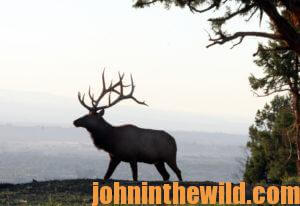
Once you’ve chosen the area, studied your topo maps and talked to the landowner, to learn even more about the region you intend to hunt, visit websites like (https://www.bowsite.com),(https://www.huntingnet.com/), (http://www.muleymadness.com/), (http://muleycrazy.com),(http://www.huntdata.com/) and other chat rooms dedicated to western hunting. You’ll be surprised at how much information you’ll learn, if you’ll just ask.
Find the elk boards on these websites. Tell other hunters where you’re planning to hunt, and ask if they’ve hunted there, and what information they can give you any about the region. Be sure to leave your email address. Oftentimes hunters will respond and tell you they’ve hunted a specific place, information about the area, and where they think you may have a good chance of locating a bull. You’ll also get quality information on where to put a camp site, what type of terrain you can expect to hunt, and possibly where other hunters have heard elk bugle before in that area.
Decide How Long You’ll Hunt:
Determine if you’ll hunt all day. Most people on public lands hunt all day. If you know numbers of hunters are concentrating on a section of land, hunt all day. However, if you pinpoint a remote section that doesn’t have much hunting pressure, and you’re the only hunter there, you can leave the elk alone in the midday and still be successful. If a cow elk has the opportunity to lie down in the middle of the day, nurse her calves and take a nap, she’ll remain there afterwards. But if the cow’s harassed all day, she’ll change zip codes.
If you have the option of not hunting in the middle of the day, let the elk rest. If you hunt in the middle of the day, most likely you’ll spook the elk. Remember that elk will let you into their kitchens where they eat and their living rooms where they walk around and loaf, but they’ll never let you in their bedrooms. If you get into their bedrooms in the middle of the day and spook them, you’ll probably never see those elk again.
Get the Elk Back:
If you hunt elk long enough and have been successful in finding elk to hunt, eventually an elk will come in, see or smell you and take off. Knowing what to do in this type of situation is often the difference between taking and not taking an elk. To get the elk back, I’ll change calls. I’ll just put a little-more pressure on the button and get a higher-pitched bugle.
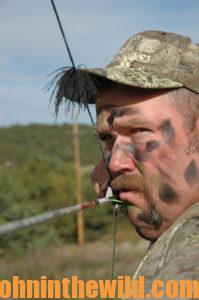
Sometimes, I’ll Indian hunt the elk, which means I’ll track him. If the wind’s right, I’ll stay on that elk’s track like a hound dog on a coon track. I call this dogging a bull. I’ll even follow that elk for an additional 2 or 3 hours and not say another word to him. When I decide to call to him, I’ll use an entirely-different call. However, I’ve found that usually after about 30 minutes, a bull seems to have forgotten what’s happened earlier. Although an elk can put a lot of distance between you and him in 30 minutes, he won’t run out of the state. Remember that after an elk is spooked, and he feels like he’s gotten away from danger, he’ll start thinking about finding the next cow to breed and locating food. The elk won’t wonder if you’re still behind him.
I’ve learned from my hunting buddy, Eddie Salter, that many times when you’re calling turkey or elk, the real advantage comes not from what you say when you’ve got a call in your hand, but what you don’t say. With almost any game species, at times silence can be an effective tool to use to get close to the animals. If you can stay close to an elk after you’ve spooked him without his knowing you’re there, and then change calls from the call you’ve been using when you’ve spooked the elk, many times you can get a second chance at the same bull. If you’re hunting very-rocky terrain, and you don’t really have the option of tracking an elk, that’s when your hunting experience will be more productive. If you understand the type of terrain where a bull prefers to hold, you still may locate that bull.
When an elk’s spooked, he’ll generally run to a dark, thick, shady spot where he doesn’t think you’ll come to find him. I prefer to hunt individual bulls, because I enjoy the challenge of getting into their heads, trying to outthink them or deciding in which direction that bull will move before he does. I’ve been amazed at the number of elk I’ve spooked and tracked only 100 yards before they’ve made a fishhook back toward me, stood in thick cover and then probably watched me as I’ve walked past them. Elk spend 365 days trying to keep their hides on, and we spend only 7 to 10 days each year trying to take their hides off. Elk aren’t dumb. They’ve learned how to avoid hunters. You’ll have to think like an elk, if you want to get a shot at him. Remember that the elk you’ve spooked won’t be standing in an open meadow or sky-lined on the top of a ridge. He’ll be in some type of thick cover where he doesn’t think you can identify him.
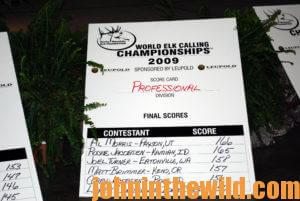
Oftentimes if the bull’s not in thick cover, he’ll search for really-steep terrain where he can stay to watch for you and spot you coming. He wants to be able to smell anything that’s approaching in front of him. If I spook an elk on the side of a ridge and see him drop-down into a canyon that has a patch of thick cover on the other side, then instead of following him down into the canyon and over to the other side, I’ll stay above him. I’ll walk from the ridge around that canyon to reach the other side above that dark timber where the elk’s holding.
The bull can’t smell me because of the odor-free thermal underwear I’m wearing, and he can’t see me because of my position. I’ll hunt down to him to keep him from seeing or smelling me before I spot him. I search for dark holes when I’m hunting, since many times if you’ve spooked an elk, that’s where he’ll retreat. Most elk will put from 300 yards to 1/2-mile of distance between them and the hunter who’s spooked them. They know most hunters won’t walk 1/2-mile to find them. Once they’ve passed that 1/2-mile mark, they’ll slow down and return to their normal routine without being afraid that someone’s chasing them. If you’ll make that 1/2-mile hike, many times you can relocate that same bull and have a chance to take him.

Remember that the Elk Won’t Kill or Eat You:
Often a hunter has this notion that an elk is a terrible thing, and he’ll hunt an elk as though the elk will kill and/or eat him. The number and the type of predators in a section of land often determine how neurotic and weary the elk will be. If you’re hunting a region with numbers of bears or mountain lions, the elk will be really skittish. The chances of their seeing or smelling you increase dramatically. But you still can get in close to them.
Some hunters believe you have to be a World Champion elk caller to have a prayer of taking a bull, but that’s not true. There are simple elk calls that work great. You can get a good book, a video and a call to learn the basics and take a nice-sized bull. Elk hunting isn’t something you can’t learn, or a sport reserved only for the most-athletic woodsmen and master callers. With some ability and effort, anyone can take an elk.
When I first learned to call elk, my friend, well-known elk caller and hunter, Wayne Carlton, said, “Ok, Al. I’ve taught you all I can about calling elk. Now it’s your turn to go to the mountains, listen to the elk and let them teach you when to call, what to say and how to speak their language.” That’s the best advice I’ve ever received about elk hunting. Listen to the elk, and allow them to teach you what, when and how to say it. If you know how to make a few key sounds, like the bugle and the cow call, you’ve got a really-good chance of taking a bull. The best time to take a bull is during the four-stages of the rut.
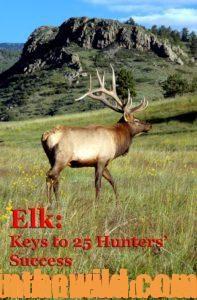
To learn more about hunting elk successfully, check out John E. Phillips’ book, “Elk: Keys to 25 Hunters’ Success,” available in Kindle, print and Audible versions at https://amzn.to/2IDszQk.
Tomorrow: Hunt the Pre-Rut – the Best Time to Take an Elk


